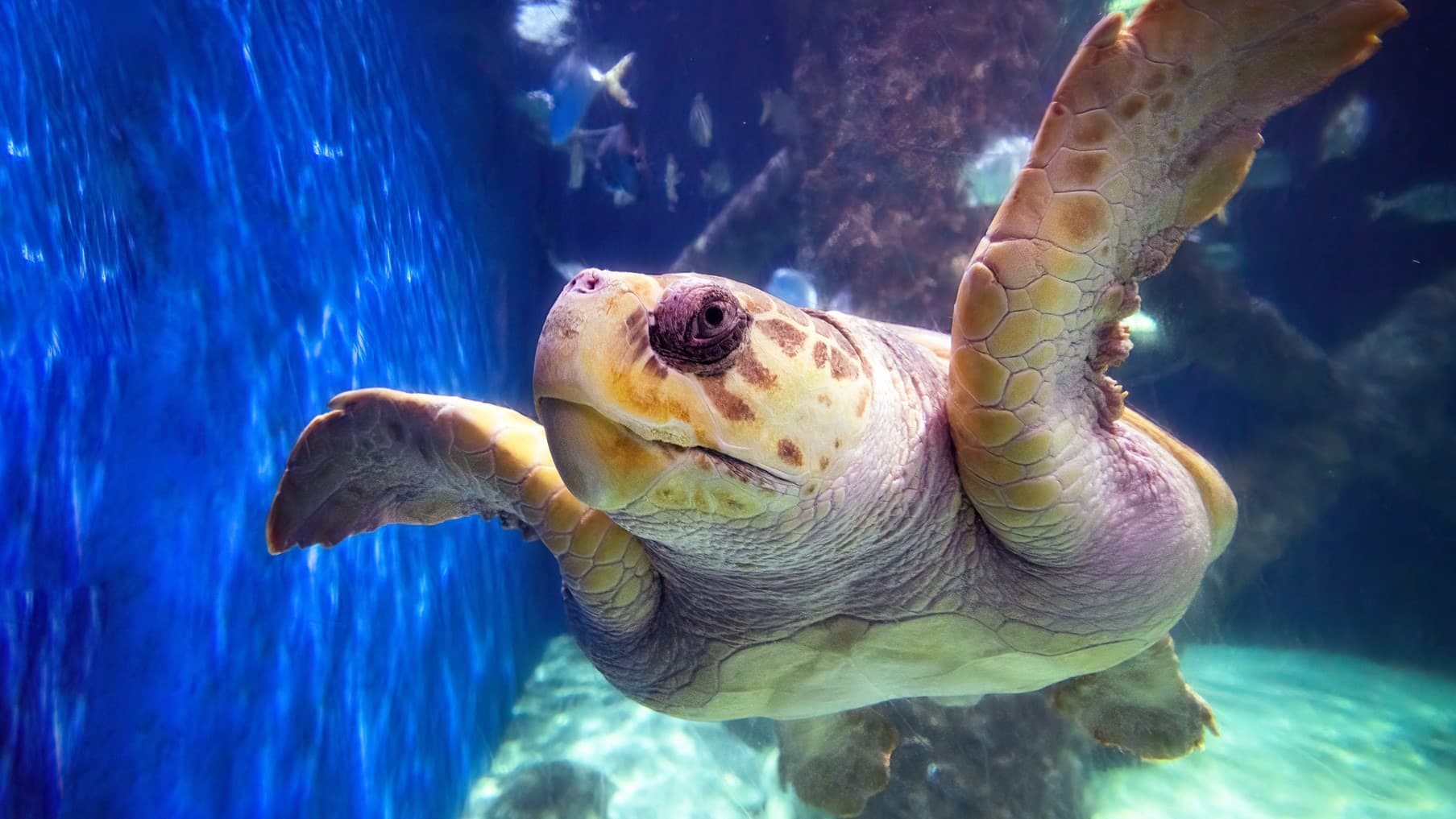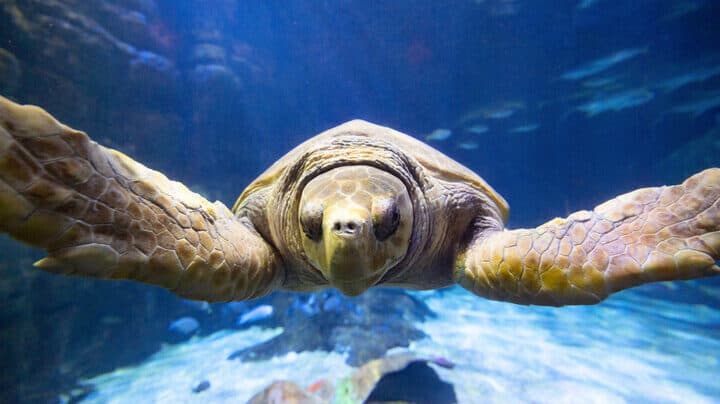Length: 3 feet
Weight: average of 250 pounds
Loggerheads can be distinguished from other sea turtles by their relatively large heads (hence the name), as well as their reddish-brown carapaces (top shells) and yellow plastrons (bottom shells).
What are scutes?
A turtle's carapace is comprised of large, hard scales called scutes. Like human fingernails, scutes are made from keratin and they grow as the turtle grows. Loggerhead sea turtles have five or more scutes on each side of the top carapace.
Diet
Loggerheads are largely carnivorous, consuming mainly marine animals such as fish, mollusks, and crustaceans that they crush with their powerful jaws. Occasionally, they will eat plant materials such as seaweed. Hatchling loggerheads will spend the first years of their life hunting small prey among mats of floating sea grass called sargassum, before growing large enough to start feeding on larger prey on the ocean floor.
Habitat
The loggerhead's range spans through tropical and subtropical regions within the Atlantic, Pacific and Indian Oceans. Atlantic loggerheads have been seen from Newfoundland down to Argentina, while within the Pacific, this species can be found from Alaska down to Chile.
Why are you crying?
At times, people have observed female loggerhead sea turtles seemingly "crying." However, the "tears" that are being excreted from their eyes are actually excess salt being removed from their bodies as they drink the salt water around them!
Concerns
Both legal and illegal fishing in the Atlantic contribute to heightened mortality among loggerhead sea turtles, since turtles may end up as bycatch in nets. The species is also threatened by loss and damage of habitats where turtles lay their eggs, as well as disease, vessel strikes, and light pollution on beaches confusing hatchlings and preventing them from entering the water.
Celebrations
A threatened species since 1978, the loggerhead is federally protected under the U.S. Fish and Wildlife Service, as well as through various international agreements. Both NOAA and USFW monitor populations of loggerhead sea turtles for conservation purposes. Since sea turtles are threatened by becoming bycatch in fishing activities, bycatch incidents have been reduced by the usage of turtle exclusion devices (TEDs) on modern fishing gear.




